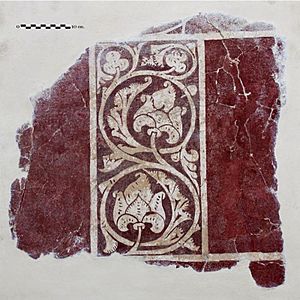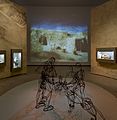Museum of Almería facts for kids
| Museo Arqueológico de Almería | |
 |
|
| Lua error in Module:Location_map at line 420: attempt to index field 'wikibase' (a nil value). | |
| Established | 1934; in present location since 2006 |
|---|---|
| Location | 91, Carretera de Ronda, 04005 Almería, Andalusia, Spain |
| Type | Archaeological Museum |
| Visitors | 55.617 (2012) |

The Museum of Almería is a cool archaeological museum located in the Province of Almería, Spain. It's a place where you can discover ancient history! This museum has been open to the public since 1934. It moved into its amazing new building in 2006.
Contents
Discovering Ancient Almería
How the Museum Started
The story of the Museum of Almería began in 1880. A Belgian engineer named Luis Siret made an exciting discovery. He found Los Millares, a very old prehistoric site in the Almería region.
Luis Siret spent a lot of time digging and studying there. He collected many ancient objects. He wanted some of these special items to stay in Almería. So, he donated his collection to the National Archaeological Museum in Madrid.
The museum in Almería officially opened in 1934. It started in two small rooms. However, the collection didn't have all the pieces Luis Siret had hoped would stay in Almería.
The Modern Museum Building
In 2006, the museum moved to its current, super modern building. This new building has three floors. These floors are used to show off all the amazing ancient artifacts.
A cool feature is a "stratigraphic column." This is a display that goes up through all three floors. It shows how archaeologists dig through layers of earth to find objects from different time periods. The main exhibits focus on the Copper Age and Bronze Age. These were times when people started using metals.
What You Can See at the Museum
Permanent Exhibitions
The main exhibits are on the first and second floors. They teach you about different ancient societies:
- Hunter-gatherer society: People who hunted animals and gathered plants for food.
- Los Millares society: A very important ancient community from Santa Fe de Mondújar, Almería.
- El Argar culture: Another significant ancient group, centered near Antas, Almería.
On the second floor, you'll find a metal structure called the "Circle of Life." It's surrounded by items that show how the Millares society traded and fought. You can also see objects from their daily lives.
There's also a "Circle of Death" display. It uses videos, shadows, and sounds. This part helps you understand how ancient people used graves together. It also shows the special rituals they performed when burying someone new.
The second floor also has walls that show how people lived on hillsides. They built terraced homes. You can see big pots, bronze weapons, silver and gold items, and pottery. These were all found in places like Fuente-Álamo and Cuevas del Almanzora.
Special Collections
On the third floor, there's a long-term display of Roman and Andalusian artifacts. One cool piece is a sculpture of the god Bacchus. It was found in a Roman villa in Chirivel.
You can also see a collection of ancient Muslim tombstones. Almería was a major place where these were made. In the middle of the room, there are cabinets with ceramics, toys, coins, and other small objects from these times.
More to Explore
The museum also has a library. It's open to everyone who wants to learn more. There's also a special area on the main floor for art. You might see paintings, modern art, or cool photographs there. The museum also has a big open space outside for visitors to enjoy.
The Museum Building
The current museum building is quite special. It was designed by Ignacio García Pedrosa and Ángela García de Paredes. It opened in 2006. The building has won several awards for its design. It even received an honorable mention in the European Museum of the Year Award contest in 2008.
Images for kids
-
Cemeteries in Al-Andalus (3rd floor).
See also
 In Spanish: Museo de Almería para niños
In Spanish: Museo de Almería para niños































